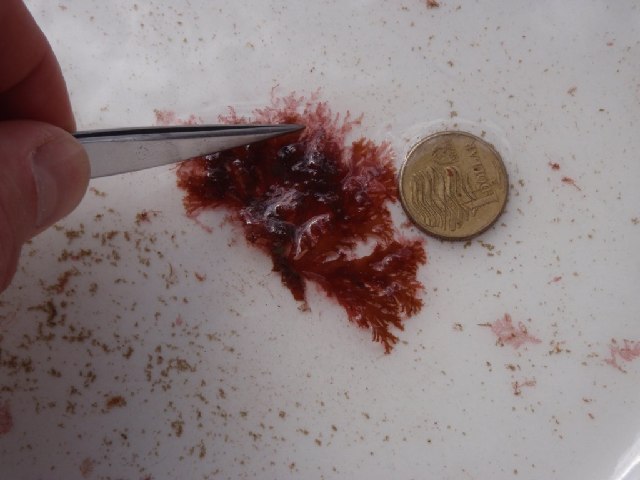
Antithamnion hubbsii
Algae
Antoithamnion hubbsii is a red alga, which was described from the Gulf of California in 1962. It is presumed to be native to the Pacific, most likely to the Northwest Pacific. It has been reported under the names A, nipponicum and A. pectinatum, and taxonomic identification of this species group is ongoing. It has been collected north to Half Moon Bay California, and from Japan, Korea, and China, and from New Zealand, Australia, and eastern South Africa. It has been reported as an introduced species on the East Coast, Europe, and the Azores. It's a small (150–300 mm) seaweed which grows on rocks and other algae in low intertidal and shallow subtidal zones. The fronds have symmetrical branches and branchlets, giving it a delicate appearance. It was first reported on the East Coast on Millstone Point, Long Island Sound Connecticut in 1985. On the East Coast, it occurs from North Carolina to Cape Cod, and possibly Maine. In Europe, it has been reported from Norway, Atlantic France and Spain, Mediterranean France, Italy, and Turkey, and also the Azores. Possible vectors include ballast water and hull fouling. This alga is is easily overlooked, and no impacts are reported.